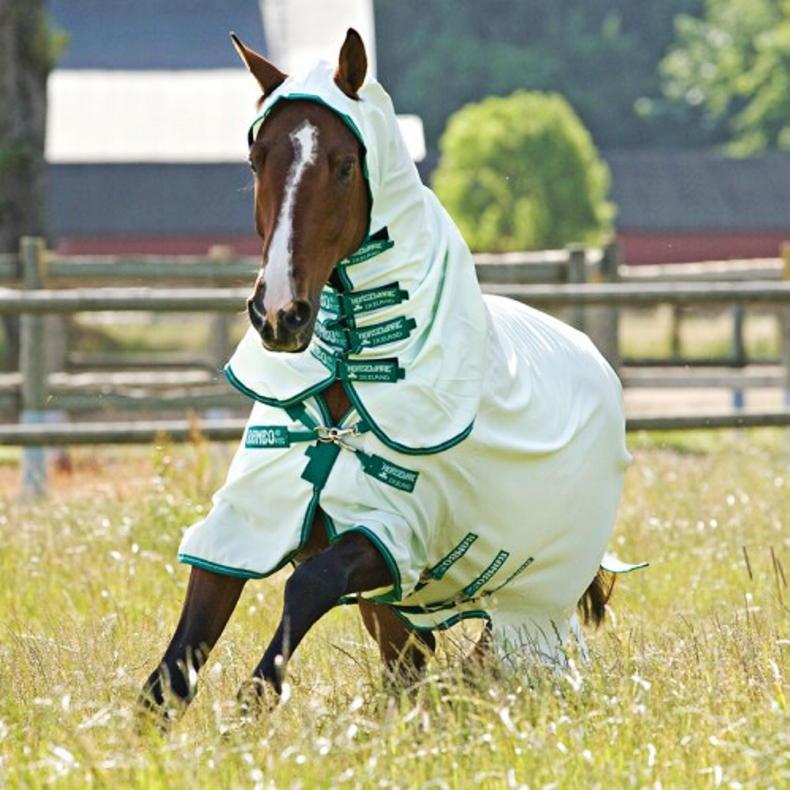DID you know horses can suffer from sunburn? Hopefully I am not speaking too soon when I say the sun is now beginning to make a more regular appearance. It is important to be vigilant at this time of year with applying sun cream to your horse.
Owners of pink skinned horses need to keep a very close eye on their horse during the summer months as sunburn happens easily on pink skin – nose, ears, backs, even lower legs.
Any hairless patches from scarring are also susceptible to sunburn. Horses that are clipped in the summer, even bays and chestnuts, can develop sunburn on that clipped skin.
In extreme cases, blisters and sores can form from sunburn which can be very uncomfortable for the horse.
Applying sun cream to vulnerable areas like a pink nose can stop your horse from getting sunburn.
Fly masks with a lower flap can cover delicate noses and ears. A thick layer of waterproof sun cream will stay on your horse horse a longer amount of time than normal sun cream.
Using a fly rug on light skinned horses is also helpful. During very hot weather, consider stabling your horse during the day to keep them out of the sun’s harmful rays.
I purchased a mesh nose shield last summer and my only regret was not doing it sooner. No matter how vigilant I was applying sun cream every morning, my pink nosed cob still managed to get burned each year. This week was his first week with the mesh nose shield on this year and it will stay on until the end of summer.
These nose shields can be worn attached to the head collar in the field or attached to the nose band when riding.
Sweet itch
It is very common for equines to suffer from allergic skin problems during the summer months.
Symptoms can usually can be noticeable as early as spring when horses get turned out. There are many types of allergic skin reactions but insect bites from the midge cullicoides cause the biggest problem known as sweet itch.
Signs of sweet itch normally reduce during the winter months.
Saliva from the midge bite is the cause of a type one hypersensitivity reaction.
Symptoms
Treatment
Stable your horse during peak biting hours: Midges are most active at dusk and dawn, so bring your horse into a stable during those hours. For additional protection, fly screens and fans in stables are also advantageous. Keep your horse covered: One way to reduce bites is to keep a fly sheet on your horse during the summer months. These full body rugs are suitable for summer conditions. These sheets and rugs can cover the belly, neck and head of the horse. Use fly-control products: Fly repellents such as deosect (cypermethrin) can offer protection. This is an effective but relatively severe product and it is advised to do a patch test before using it all over your horse. It can last for 14 days but cannot be used on broken skin.
Other fly sprays can be bought from equine supply stores and can work well but should be applied regularly. Just like sunscreen these sprays often do not last all day. Oils such as citronella oil also provide a barrier that midges do not like to bite through.
Restrict your horse’s access to marshy areas: Midges breed in marshy, shady ground with rotting vegetation. If possible, move your horse to a field in a drier, more exposed location away from boggy terrain.
Riding in warm weather
When at a competition during warm weather, horses should be kept in the shade when possible. This includes under a tree or in a well-ventilated trailer or lorry.
If they get overheated when competing, washing or hosing with warm water is advisable.
To compensate for losses from sweating, horses can be given an electrolyte supplement in water, feed or oral paste in a syringe.
Dehydration can lead to impaction colic due to the faeces becoming abnormally dry in the large intestine. Fresh water must be constantly available tso that the horse is never thirsty and always has a steady flow through its intestine and kidneys.
Sprinkling a handful of table salt onto the feed can encourage a horse to drink more.
Soaking hay and wetting feed can also help to increase the daily water intake.
